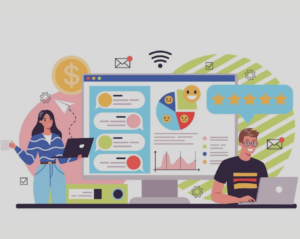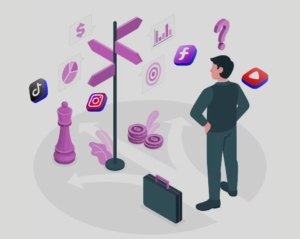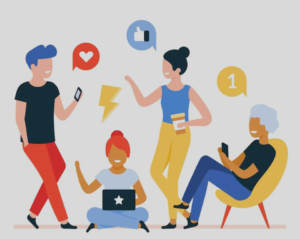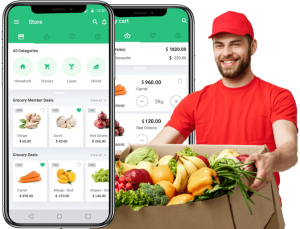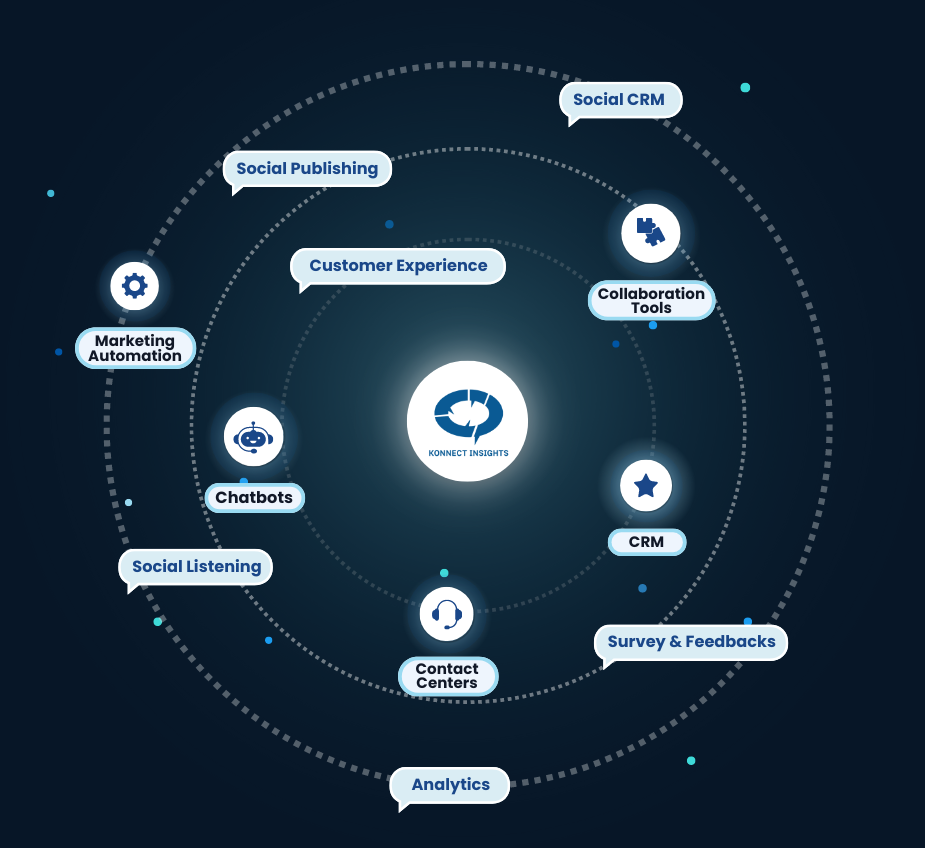Social media has become an integral part of our lives in today’s digital age. It has transformed the way we interact with each other and consume information. Social media platforms like Twitter, Facebook, and Instagram are not only used for personal communication but also for business purposes, including product development.
Social listening is the process of monitoring social media channels to track conversations about a brand, product, or industry. It gives businesses valuable insights into consumer behavior, preferences, and sentiment, which can inform product development decisions.
In this white paper, we will explore the steps involved in successful product development using social listening. Also, we will understand how social listening in product development can prove to be a game changer with a few examples.
Watch out: 6 Social Listening Trends 2023 To Stay Ahead of the Game
Steps Involved In Successful Product Development
In today’s highly competitive business landscape, the importance of social listening in product development cannot be overstated. Understanding consumer needs and preferences is crucial to developing products that resonate with them.
In this section, we will discuss the key steps involved in incorporating social listening into the process of product development.
- Define your target audience: Before you start developing your product, it’s important to identify your target audience and understand their needs and pain points. Social listening can help you gather insights into your audience’s preferences, behaviors, and opinions, which can inform your product development strategy.
- Set Up Social Media Monitoring Tools: The next step is to set up social media monitoring tools to track and analyze social media conversations relevant to your product. There are many tools available for social listening, such as Hootsuite, Sprout Social, and Brandwatch. These tools can help you monitor conversations, identify key influencers, and track sentiment about your product.
- Conduct market research: Once you have identified your target audience, conduct market research to understand the competitive landscape and identify any gaps in the market. Social media listening research can help you track competitor activity, identify emerging trends, and gain insights into the market landscape.
- Develop a product roadmap: Based on your market research and insights from social listening, develop a product roadmap that outlines your product’s key milestones and features. Your product roadmap should align with your business goals and target audience’s needs.
- Test and iterate: Once you have developed a product prototype, conduct user testing to gather feedback and iterate on your product. Social listening can help you gather insights from your target audience and identify areas for improvement.
5 Incredible Ways Social Listening Helps in Product Development
Let’s explore the five incredible ways in which social listening can help businesses in product development:
- Helps in mapping customer preferences
Social listening can help businesses map customer preferences by analyzing social media conversations and online reviews. By monitoring customers’ feedback about their brand and competitors, businesses can gain insights into what their customers want and tailor their products and services accordingly. For example, a restaurant could use social listening to identify popular menu items or dietary preferences among their customers and adjust their menu accordingly. Similarly, a fashion brand could use it to identify popular styles or colors among its target audience and develop new products that meet these preferences.
- Provides Deeper Consumer Insights
With social listening, businesses can obtain deeper consumer insights, enabling them to understand the motivations and behaviors that drive consumer decision-making. By analyzing social media conversations, businesses can gain insights into their customers’ emotions, attitudes, and opinions toward their products and those of their competitors.
A skincare company can analyze conversations around skincare concerns and identify the most common issues among its target audience. For instance, if the company finds that many of its customers are concerned about the signs of aging, it could develop a line of anti-aging products that cater to this need.
- Helps Improve the Overall Operation
Social listening can help businesses improve their overall operations by identifying areas for improvement and addressing customer pain points. By monitoring social media conversations, businesses can gain insights into common customer complaints or issues when using their products or services.
For example, a tech company that develops project management software can use social listening to analyze feedback from social media conversations and online reviews about their product. This can help the company identify common issues faced by its customers, such as difficulty navigating the user interface or a lack of certain features. Armed with this information, the company can improve its software by making it more user-friendly and adding new features that meet the needs of its customers and enhance its overall operations.
- Quick Online Feedback Helps Improve Product Quality
Businesses can use social listening to get customer feedback and improve product quality quickly. By keeping an eye on what people say on social media, businesses can identify issues or things they need to improve.
For example, a food brand can use social listening to see if people are complaining about the taste or quality of their products. By quickly addressing these concerns, the brand can enhance the quality of its products and ensure customer satisfaction.
- Competitor Product Analysis Becomes Easy
Social listening can help businesses conduct competitor analysis more effectively. This can be done by monitoring conversations around their competitors’ products. By analyzing social media conversations, businesses can identify the strengths and weaknesses of their competitor’s products and gain insights into what their customers like or dislike about them.
For example, a car manufacturer can use social listening to analyze conversations around their competitor’s latest car model. By identifying the features that customers like or dislike about the competitor’s car, the manufacturer can improve their own car models and gain a competitive advantage.
Read about: 20 Benefits of Using Social Listening Tools for Your Business
Revolutionary Product Development Trends That Will Shape 2023 and Beyond
Here are some top product development trends in 2023 where social listening can be a valuable tool:
- Personalization: Personalization is becoming increasingly important in product development, and social listening can help businesses understand what their customers want and tailor their products accordingly. By analyzing social media conversations and online reviews, businesses can gain insights into customer preferences and create products that meet their specific needs.
An example of the trend toward personalization in product development where social listening can help is the use of geo-based social listening. This approach uses geofencing technology to create a virtual boundary using Radio-Frequency IDentification or the Global Positioning System and triggers a series of events when mobile devices enter the zone. This can help businesses deliver more personalized offers and brand content based on the location of their customers.
- Sustainability: Sustainability is no longer just a buzzword; it has become a top priority for consumers. By tracking social media conversations and online reviews, businesses can identify areas where they can improve their sustainability practices and develop environmentally friendly products.
For example, a fashion brand could use social listening to identify concerns about the environmental impact of fast fashion and develop a line of clothing made from sustainable materials.
Another example is using online reviews to understand customer preferences for sustainable products. For instance, a food company could use social listening to identify concerns about the use of plastic packaging and switch to more environmentally friendly alternatives.
- Health and Wellness: Health and wellness have become a top priorities for consumers. Businesses can use social listening to identify trends and opportunities in this space.
An example of the trend toward health and wellness in product development where social listening can help is using social media to track conversations about health and wellness topics. For example, a food company could use social listening to identify popular diets or health concerns among their target audience and develop new products that cater to these needs.
- Artificial Intelligence: Artificial Intelligence (AI) is revolutionizing product development. Social listening can play a key role in this process. By analyzing social media conversations and online reviews, businesses can identify trends and patterns that can be used to improve AI algorithms and develop more intelligent and intuitive products.
For example, by using natural language processing and machine learning algorithms, these tools can identify trends and patterns in customer feedback that can be used to improve AI algorithms and develop more intelligent products. For example, a tech company could use social listening to identify common issues with their voice assistant and use this information to improve its accuracy and responsiveness.
Another example is a streaming service that could use AI-powered analytics to understand the viewing habits of its customers and develop personalized recommendations based on their preferences.
- Omnichannel Experiences: Omnichannel experiences are becoming increasingly important in product development, and social listening can help businesses create seamless experiences for their customers across multiple channels. By monitoring social media conversations and online reviews, businesses can gain insights into how their customers interact with their brands and develop products tailored to their needs.
An example of this is the use of online reviews to understand customer preferences for omnichannel experiences. For instance, a bank could use social listening to identify common issues with their mobile app and online banking services and develop solutions that provide a more seamless customer experience.
Final Words
With this white paper, the importance of social media listening in product development needs no more justification. Its potential to transform product development is immense and helps in mapping customer preferences, enhancing overall operations, receiving prompt online feedback for improving product quality, and conducting competitor analysis.
At Konnect Insights, we offer a comprehensive omnichannel customer experience management suite encompassing social listening as a primary feature. Our platform simplifies the process of listening, assessing, and improving customer experiences through seamless integration with over 3000 software applications.
Our platform has an intuitive and user-friendly interface, making it easy to use for businesses of all sizes. With Konnect Insights, businesses can leverage the power of social listening to gain a competitive advantage and drive growth. Talk to us today!

